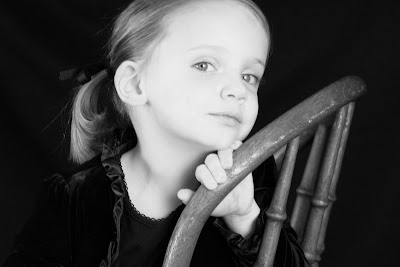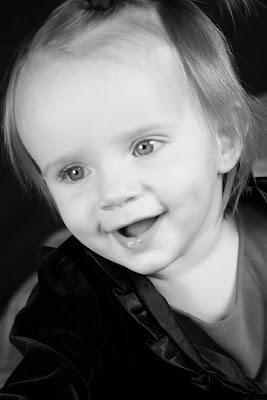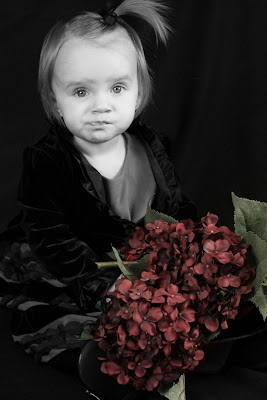Many of you have asked me lately about how when you print a picture off at Costco, it's darker than what is on your screen. I'm going to give you a brief explanation of how to download a profile thus calibrating your monitor with Costco's and hopefully giving you the picture you want.
What you need to do is go to costco.com and click on "photos" at the top. Once you have signed in, you will see an option for "printer profiles" somewhere in the middle of the page in blue lettering. Click on it. Then, under "option 1" click "continue" (or just go to this link: http://www.drycreekphoto.com/icc/). On the left hand side, find your state and then find your city in the middle column. For example, I clicked on "ohio" on the left hand side and scrolled down until I saw "Cleveland:".
I know not all the Costco's offer the same options so you may have to kind of figure it out for yourself from here if it's not the same as mine. But, under "Cleveland:" there is an option for "Glossy paper profile, October 1, 2007" and "Lustre paper profile, October 1, 2007". You then need to click on one of these options (depending on whether you do glossy or lustre) and save it in the following extension: \Windows\system32\spool\drivers\color. If that doesn't make sense, what you do is go to your C: drive > Windows >system32 > and so on. I can't promise that all of your computers will be in those exact locations either (or go here:http://www.drycreekphoto.com/Learn/profile_install.htm to see other options). You can see how to use your profiles and apply them to your pictures by going here: http://www.drycreekphoto.com/Learn/profiles.htm
That's a whole lot of information but I hope it helps.
Sunday, November 11, 2007
Friday, November 9, 2007





I can't remember who, but someone asked how to do the black and white photos with a little color (like the 3rd pic down). I don't know if I ever answered but the way I do it is create a second layer (command J or control J) then desaturate it. Then I take my handy dandy eraser, put the opacity at say... 65% or something, and then erase over the part that I want color to show through. You just make your eraser smaller or bigger to help you get the job done adequately. There are many other ways to do it, but that's the way I prefer.
Another thing I wanted to say about these photos is that the only editing I did to them (besides desaturation and sepia) is cropping - that's it. I was so pleased with the lighting from my Smith Victor lights that I didn't have to do ANY editing. PLUS, I took them in MANUAL mode. I know, I know, FINALLY!!! I get it. I finally get it and I feel so free! Okay, I better stop before I break into song.
Thursday, November 8, 2007
Running a Batch
So, Tresure asked me about this and I thought you all might want to know as well. She asked how to run an "action" on a folder of pictures. All you do is go to File> Automat> Batch. And then you will see where you select the folder and the action. You can also just run your action on one picture by opening it up and just pushing "play" underneath the "action" folder. Let me know if you have questions.
Photography Class
So, I have been going to a photography class lately and it's been really fun. Here are a few tips that I really liked:
1. Fall pictures - this is a little late but hopefully you can still find some fall leaves. If you get a Polarized lens cover, it dims the brighter areas leaving you with more saturation. You will get the most out of the beautiful colors. However, since you are toning down the lighter areas, you'll want to take this lens off when you are taking pictures in dimmer light. Otherwise, you would have to bump up your ISO's and risk creating more noise in your picture.
2. Reflecting light - I'm sure you have all figured out the trick to taking pictures inside with your "Direct On Camera Flash" (aka the flash that you have to physically attatch to your camera). In case you haven't, to get the most out of your in door pictures, point your flash towards the ceiling above you (hopefully it is white or some kind of tone around that) and bounce it off towards your subject. I've been doing this for a while now, thanks to my fabulous teachers Jen and Becky but I learned last night that you can tape or attatch some other way, a white card to the back of your flash so that it sticks up a couple of inches from the flash. What happens is when you take the picture and the flash goes off, the light not only bounces off the ceiling but also off the white card, creating light that hits your subject from the top and the front. This will smooth hard lines and edges. Let me know if I need to post a picture of what I'm talking about.
3. Also, along the lines of lighting, you can take a white sheet and hold it up in fron of a lamp to create soft lighting for portraits and etc. You really can create your own photo studio with objects like these, it's all about diffusing your light and spreading it out.
4. www.strobist.com - my professor told us of this website where they take cool pictures using regular camera flashes. Just something fun to look at.
1. Fall pictures - this is a little late but hopefully you can still find some fall leaves. If you get a Polarized lens cover, it dims the brighter areas leaving you with more saturation. You will get the most out of the beautiful colors. However, since you are toning down the lighter areas, you'll want to take this lens off when you are taking pictures in dimmer light. Otherwise, you would have to bump up your ISO's and risk creating more noise in your picture.
2. Reflecting light - I'm sure you have all figured out the trick to taking pictures inside with your "Direct On Camera Flash" (aka the flash that you have to physically attatch to your camera). In case you haven't, to get the most out of your in door pictures, point your flash towards the ceiling above you (hopefully it is white or some kind of tone around that) and bounce it off towards your subject. I've been doing this for a while now, thanks to my fabulous teachers Jen and Becky but I learned last night that you can tape or attatch some other way, a white card to the back of your flash so that it sticks up a couple of inches from the flash. What happens is when you take the picture and the flash goes off, the light not only bounces off the ceiling but also off the white card, creating light that hits your subject from the top and the front. This will smooth hard lines and edges. Let me know if I need to post a picture of what I'm talking about.
3. Also, along the lines of lighting, you can take a white sheet and hold it up in fron of a lamp to create soft lighting for portraits and etc. You really can create your own photo studio with objects like these, it's all about diffusing your light and spreading it out.
4. www.strobist.com - my professor told us of this website where they take cool pictures using regular camera flashes. Just something fun to look at.
Subscribe to:
Posts (Atom)